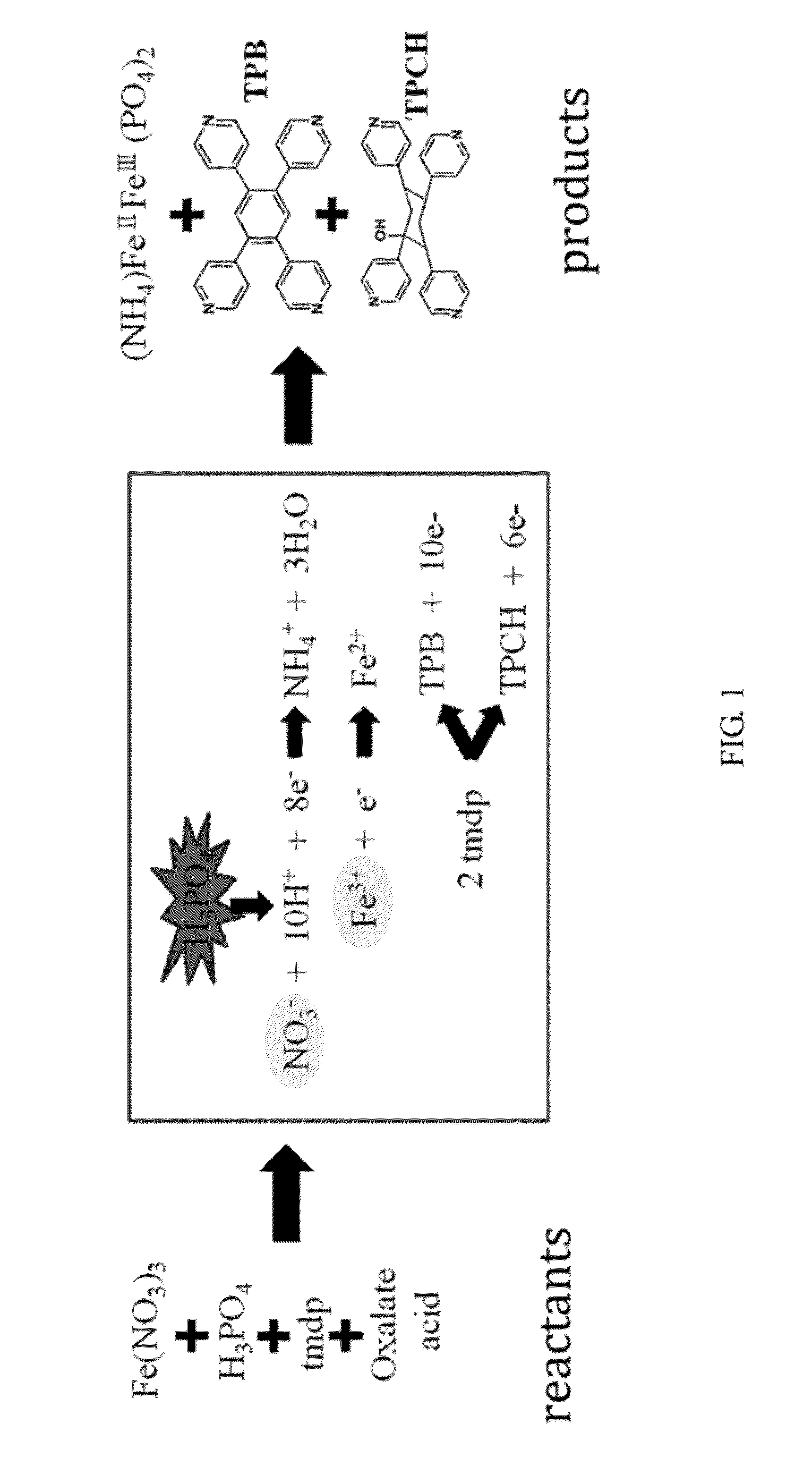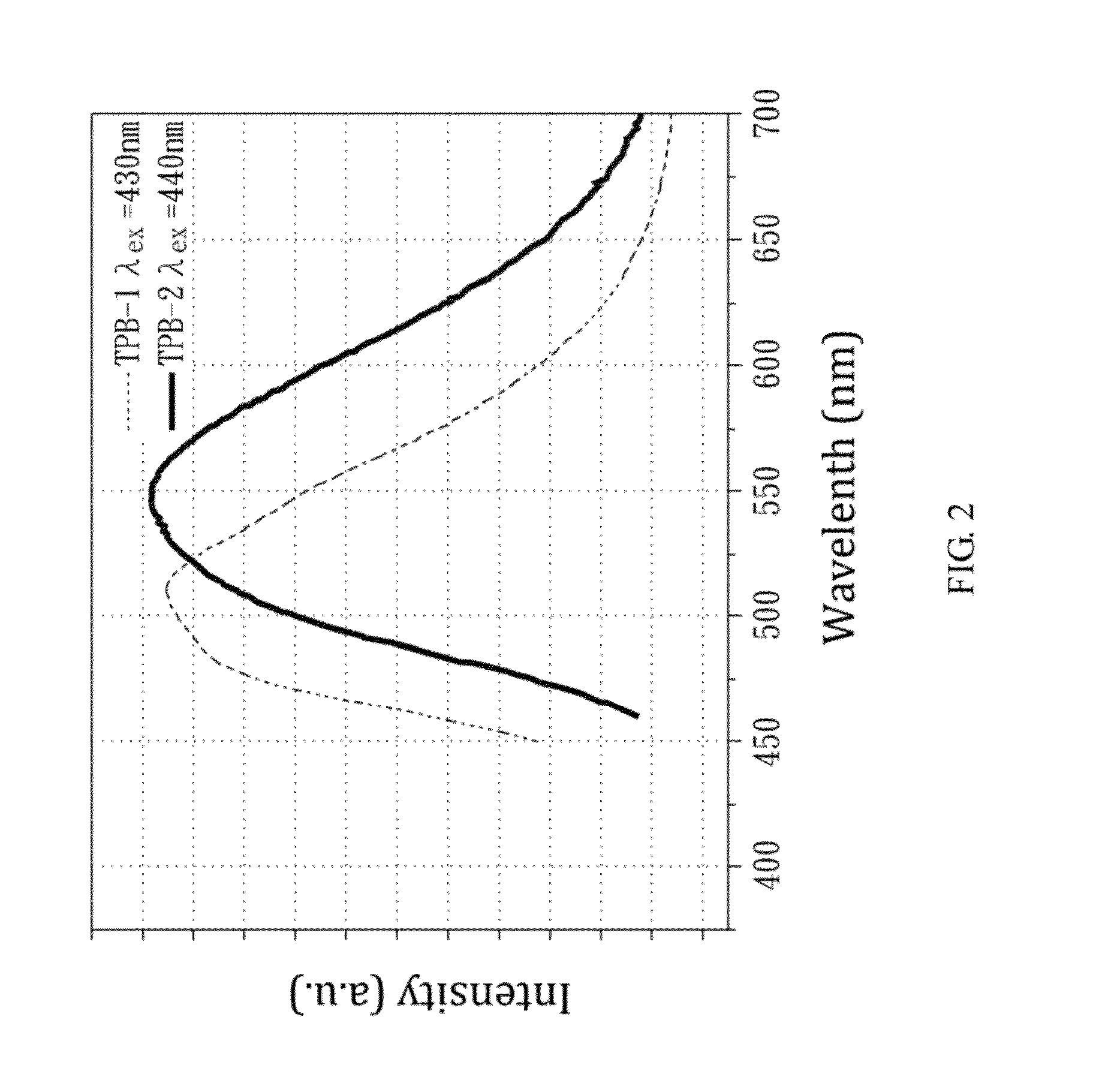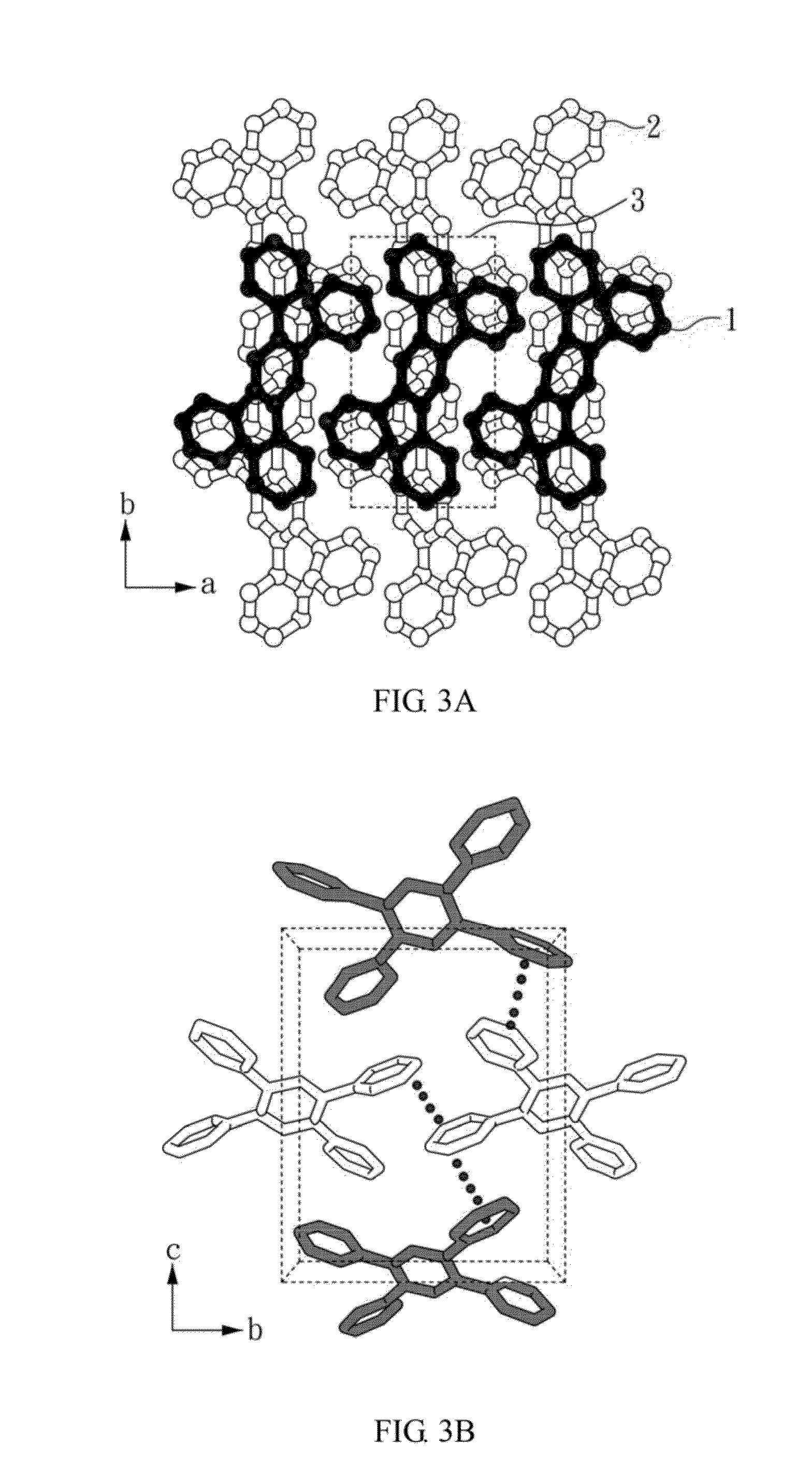Organic amine dimmer and method for synthesizing the same
- Summary
- Abstract
- Description
- Claims
- Application Information
AI Technical Summary
Benefits of technology
Problems solved by technology
Method used
Image
Examples
example 1
TPB Synthesis
[0030]First, 0.4 mmol of Fe(NO3)3, 1.2 mmol of oxalate acid, 6.4 mmol of TMDP, 9 mmol of H3PO4, and 2 mL of deionized water were mixed to form a mixture.
[0031]Next, the mixture was placed in a teflon cup, heated with a rate of 60° C. / hr, and then maintained at a temperature of 180° C. for 1-2 days. Thereafter, the mixture was by cooled with a rate of 6° C. / hr.
[0032]Finally, the mixture was kept at room temperature for 1 day or more, to form anhydrous TPB and dihydrate TPB simultaneously.
[0033]FIG. 1 shows the flow chart of the synthesis reaction, wherein the left diagram illustrates the reactants, the middle diagram illustrates the reaction process, and the right diagram illustrates the products. In the reaction, NO3− and Fe3+served as the oxidants (marked by circle), wherein NO3− was especially the major oxidant. Since many protons were needed for reducing NO3− to NH4+, phosphoric acid added in the reaction served as a driving factor (marked by explosive circle). In th...
PUM
 Login to View More
Login to View More Abstract
Description
Claims
Application Information
 Login to View More
Login to View More - R&D
- Intellectual Property
- Life Sciences
- Materials
- Tech Scout
- Unparalleled Data Quality
- Higher Quality Content
- 60% Fewer Hallucinations
Browse by: Latest US Patents, China's latest patents, Technical Efficacy Thesaurus, Application Domain, Technology Topic, Popular Technical Reports.
© 2025 PatSnap. All rights reserved.Legal|Privacy policy|Modern Slavery Act Transparency Statement|Sitemap|About US| Contact US: help@patsnap.com



